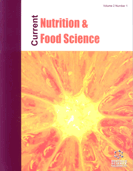Abstract
Background: Barley flour does not contain gluten, so preparation of high-quality bread is not easy. Thus, the incorporation of microbial transglutaminase (MTG) can be attributed as one of the possible strategies to provide crosslinks between wheat and barley proteins to prepare a similar structure to the desired network of gluten.
Methods: The MTG, at different levels (0.5, 1, 1.5, and 2%) was added to wheat and hull-less barley in order to evaluate the solubility of available proteins and sodium dodecyl sulphate polyacrylamide gel electrophoresis (SDS-PAGE) patterns of (20, 35, 50%) dough proteins as well as their fractions by using an electrophoretic system. Also, to enhance the extent of cross-linking in protein matrix by incorporation of MTG, soy protein isolate (SPI) was used (1% MTG+3% SPI, 1.5% MTG+3% SPI).
Results: Interactions between wheat and hull-less barley proteins were intensified due to the formation of catalyzed intermolecular covalent bonds by transglutaminase. According to SDS-PAGE results with increment in the levels of MTG, a progressive decrease in the intensity of the bands corresponding to the molecular weight of around 66 KDa was observed. Also by the addition of MTG, the amounts of the soluble proteins (albumin and glubolin) were significantly decreased and the concentrations of insoluble proteins (glutenin and gliadins) were increased.
Conclusion: The addition of hull-less barley flour to wheat flour not only provides protein-enriched dough with better amino acid balance but also has influences on dough properties.
Keywords: Transglutaminase, electrophoresis, solubility, hull-less barley, wheat flour.
Graphical Abstract
Current Nutrition & Food Science
Title:Effect of Microbial Transglutaminase on Protein Electrophoretic Pattern and Solubility of Wheat Flour and Hull-Less Barley Flour Blends
Volume: 12 Issue: 4
Author(s): Kiana Pourmohammadi, Seyed Mohammad Bagher Hashemi, Amin Mousavi Khaneghah, Mehran Alami, Mohammad Shahedi, Alireza Sadeghi Mahoonak and Roya Afshari
Affiliation:
Keywords: Transglutaminase, electrophoresis, solubility, hull-less barley, wheat flour.
Abstract: Background: Barley flour does not contain gluten, so preparation of high-quality bread is not easy. Thus, the incorporation of microbial transglutaminase (MTG) can be attributed as one of the possible strategies to provide crosslinks between wheat and barley proteins to prepare a similar structure to the desired network of gluten.
Methods: The MTG, at different levels (0.5, 1, 1.5, and 2%) was added to wheat and hull-less barley in order to evaluate the solubility of available proteins and sodium dodecyl sulphate polyacrylamide gel electrophoresis (SDS-PAGE) patterns of (20, 35, 50%) dough proteins as well as their fractions by using an electrophoretic system. Also, to enhance the extent of cross-linking in protein matrix by incorporation of MTG, soy protein isolate (SPI) was used (1% MTG+3% SPI, 1.5% MTG+3% SPI).
Results: Interactions between wheat and hull-less barley proteins were intensified due to the formation of catalyzed intermolecular covalent bonds by transglutaminase. According to SDS-PAGE results with increment in the levels of MTG, a progressive decrease in the intensity of the bands corresponding to the molecular weight of around 66 KDa was observed. Also by the addition of MTG, the amounts of the soluble proteins (albumin and glubolin) were significantly decreased and the concentrations of insoluble proteins (glutenin and gliadins) were increased.
Conclusion: The addition of hull-less barley flour to wheat flour not only provides protein-enriched dough with better amino acid balance but also has influences on dough properties.
Export Options
About this article
Cite this article as:
Pourmohammadi Kiana, Hashemi Mohammad Bagher Seyed, Khaneghah Mousavi Amin, Alami Mehran, Shahedi Mohammad, Mahoonak Sadeghi Alireza and Afshari Roya, Effect of Microbial Transglutaminase on Protein Electrophoretic Pattern and Solubility of Wheat Flour and Hull-Less Barley Flour Blends, Current Nutrition & Food Science 2016; 12 (4) . https://dx.doi.org/10.2174/1573401312666160909162441
| DOI https://dx.doi.org/10.2174/1573401312666160909162441 |
Print ISSN 1573-4013 |
| Publisher Name Bentham Science Publisher |
Online ISSN 2212-3881 |
 13
13 1
1
- Author Guidelines
- Bentham Author Support Services (BASS)
- Graphical Abstracts
- Fabricating and Stating False Information
- Research Misconduct
- Post Publication Discussions and Corrections
- Publishing Ethics and Rectitude
- Increase Visibility of Your Article
- Archiving Policies
- Peer Review Workflow
- Order Your Article Before Print
- Promote Your Article
- Manuscript Transfer Facility
- Editorial Policies
- Allegations from Whistleblowers
- Announcements
Related Articles
-
A Catalytically Inactive Lys49 PLA2 Isoform from Bothrops jararacussu venom that Stimulates Insulin Secretion in Pancreatic Beta Cells
Protein & Peptide Letters Marine Lipids and the Bioavailability of <i>Omega</i>-3 Fatty Acids
Current Nutrition & Food Science Emerging Targets for the Treatment of Dyslipidemia
Current Medicinal Chemistry Novel Anti-arrhythmic Medications in the Treatment of Atrial Fibrillation
Current Cardiology Reviews Therapeutic Perspectives in Alzheimers Disease
Recent Patents on CNS Drug Discovery (Discontinued) Blood Coagulation as an Intrinsic Pathway for Proinflammation: A Mini Review
Inflammation & Allergy - Drug Targets (Discontinued) Editorial (Thematic Issue: Global Clinical Trials, Research, Regulations and Education)
Applied Clinical Research, Clinical Trials and Regulatory Affairs Anthocyanins: Plant Pigments, Food Ingredients or Therapeutic Agents for the CNS? A Mini-Review Focused on Clinical Trials
Current Pharmaceutical Design Chlamydia-Secreted Proteins in Chlamydial Interactions with Host Cells
Current Chemical Biology Prevalence and Associated Risk Factors of Hyperglycemia and Diabetes Mellitus Among HIV Positive Patients in Tehran, Iran
Infectious Disorders - Drug Targets Hypercholesterolemia and Endothelium Dysfunction: Role of Dietary Supplementation as Vascular Protective Agents
Current Vascular Pharmacology Prevalence and Risk Factors for Diabetes Mellitus in A State in South East Nigeria: Results of a Population Based House to House Survey
Current Diabetes Reviews Roles of L5-7 Loop in the Structure and Chaperone Function of SsHSP14.1
Protein & Peptide Letters Adult and Embryonic Stem Cells in Cartilage Repair
Current Rheumatology Reviews Glucose Analog Inhibitors of Glycogen Phosphorylases as Potential Antidiabetic Agents: Recent Developments
Current Pharmaceutical Design Molecular Determinants of Gastrointestinal and Liver Cancers: Role of Bile Acid Activated Nuclear Receptors
Current Topics in Medicinal Chemistry Refining Genetic Approaches for Identifying Behavioral Loci
Current Genomics Circulating Insulin-like Growth Factor-1 Levels in Patients with Rheumatoid Arthritis: A Meta-analysis
Current Pharmaceutical Design Toward the Design of MR Agents for Imaging β-Cell Function
Current Medicinal Chemistry - Immunology, Endocrine & Metabolic Agents From Dual Peroxisome Proliferator Activated Receptor Agonists to Selective Peroxisome Proliferator Activated Receptor Modulators
Recent Patents on Endocrine, Metabolic & Immune Drug Discovery (Discontinued)





















